Đề thi Olympic Tiếng Anh lớp 8 vòng 3 năm học 2013 - 2014
Đề thi Olympic Tiếng Anh lớp 8
Với mong muốn cung cấp đến quý thầy cô cùng các bạn học sinh nhiều hơn nữa những tài liệu hay và chất lượng nhằm phục vụ công tác ôn tập luyện thi Olympic Tiếng Anh. Chúng tôi đã sưu tầm và xin được gửi tới bạn: Đề thi Olympic Tiếng Anh lớp 8 vòng 3 năm học 2013 - 2014.
Đề thi Olympic Tiếng Anh lớp 8 vòng 2 năm học 2013 - 2014
Đề thi Olympic Tiếng Anh lớp 8 vòng 3 đề thi số 1
Choose the best answer for the following questions. (2 points per question)

The diagram above shows a portion of a DNA molecule that codes for a normal condition and one that codes for an abnormal condition.
Câu 1. The difference between the normal condition DNA and the abnormal condition DNA shown in section two is called
A. A replication B. A translation C. A mutation D. A transcription
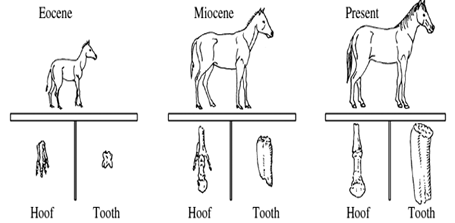
The diagram above represents part of the horse fossil record from three time periods. It includes illustrations of the hooves and teeth of horses from each time period.
Câu 2. Which of the following statements is best supported by the horse fossil record?
A. The horse has been a carnivore.
B. The horse has changed over time.
C. The horse has many common ancestors.
D. The horse has lived in the same ecosystem.
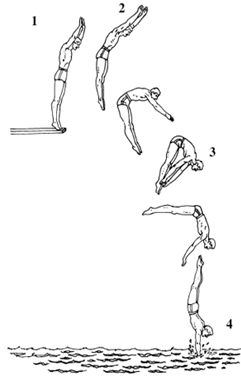
The diagram above represents a diver's motion from the top of a high diving board into a pool of water.
Câu 3. At which labeled point does the diver have the least potential energy?
A. 1 B. 2 C. 3 D. 4
Câu 4. Which of these have a positive charge and are found in the nucleus of an atom?
A. Neutrons B. Protons C. Electrons D. Elements
Câu 5. The process of iron combining with oxygen to form rust is considered a chemical change because rust has
A. Properties that differ from both iron and oxygen
B. The same chemical composition as iron
C. A very high melting point
D. Greater chemical reactivity than oxygen
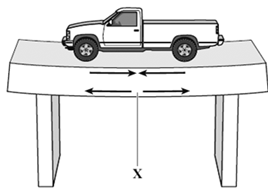
A beam bridge supporting a toy truck is shown in the diagram above.
When an object pushes down on this bridge, the bottom edge experiences a force that tends to pull it apart as shown.
Câu 6. What is the type of force labeled X?
A. Compression B. Shear C. Tension D. Torsion
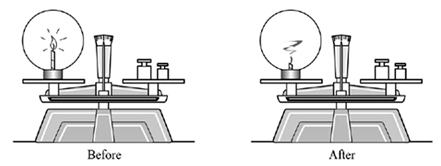
The diagram above shows a balance being used to measure a burning candle in a sealed glass ball before and after the burning is complete.
As the candle burns, the size of the candle decreases, but the reading on the balance does not change.
Câu 7. Which of the following is demonstrated by this experiment?
A. Energy is converted to mass when the candle is burned.
B. Smoke particles have more mass than molecules of candle wax.
C. Kinetic energy is converted to potential energy when the candle is burned.
D. The total mass of the system is constant.
Câu 8. To create a graph representing the average growing time of different plants in the science lab, which program should Mika use?
A. Database B. Spreadsheet C. Telecommunications D. Word processing
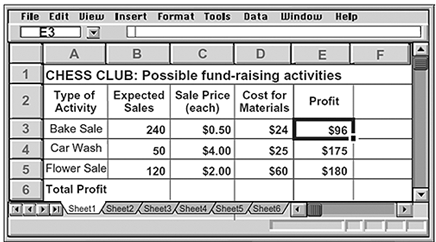
To get the profit for each activity, Jose multiplied the expected sales by the sale price and then subtracted the cost of the materials needed.
Câu 9. The formula in cell E3 would be
A. = (B3*C3)-D3 B. = (D3*B3)+C3
C. = B3*(C3-D3) D. = B3+(C3*D3)
CH4 + 2O2 → CO2 + 2H2O
Câu 10. In the reaction above, the products are
A. CH4 and 2O2 B. CH4 and CO2 C. 2O2 and 2H2O D. CO2 and 2H2O
Đề thi Olympic Tiếng Anh lớp 8 vòng 3 đề thi số 2
Choose the best answer for the following questions. (2 points per question)
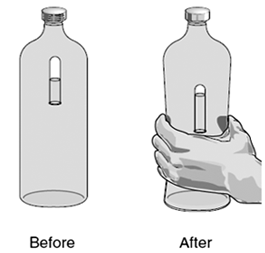
The picture above shows a Cartesian diver made from a plastic bottle filled with water and an inverted test tube partially filled with water.
Câu 1. What causes the diver to sink as the bottle is squeezed?
A. The size of the diver increases.
B. The volume of air in the diver decreases.
C. The water in the bottle becomes less dense.
D. The air in the water comes out of solution.
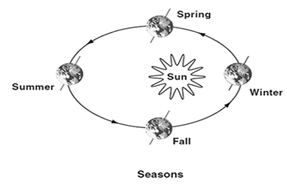
The diagram above shows the relative positions of Earth and the Sun for each of the four seasons. Because Earth travels in an elliptical orbit, it is about two million miles closer to the Sun in the winter than in the summer.
Câu 2. If Earth is closer to the Sun in winter, why is Texas colder in the winter than in other seasons?
A. The Sun releases less energy in the winter.
B. The Eastern Hemisphere faces the Sun during the winter.
C. The Moon is between the Sun and Earth during the winter.
D. The Northern Hemisphere is pointed away from the Sun in the winter.
Câu 3. Which of these uses sound waves to measure the distance between objects underwater?
A. Radar B. Sonar C. Lasers D. Radio
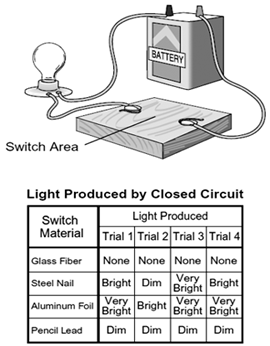
Câu 4. According to the data above, which material is the poorest electrical conductor?
A. Glass B. Steel C. Aluminum D. Pencil lead
The various organized structures present in the cytoplasm are called organelles.
Câu 5. Which of the following organelles is responsible for the release of energy to support cell activities?
A. Mitochondrion B. Endoplasmic reticulum C. Vacuole D. Nucleus

Jerry is conducting an experiment to test friction. His setup is shown above.
Câu 6. If he wants to test the friction between different types of materials, what should he change in the setup above?
A. Replace the mass with a different size mass
B. Replace the string with a different length string
C. Replace the spring scale with a different kind of scale
D. Replace the wooden block with a different kind of block
Animals and plants get their food in different ways. Animals usually ingest their food, while plants must produce their own food.
Câu 7. The process through which plants produce their food is called
A. Respiration B. Photosynthesis C. Pollination D. Germination
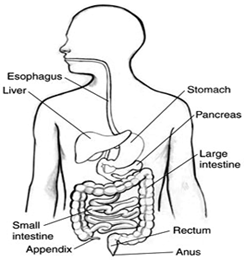
Câu 8. Which organ of the digestive system absorbs the MOST nutrients from food?
A. Stomach B. Pancreas C. Small intestine D. Large intestine
Seeds come in different shapes to help them travel away from the parent plant. Some seeds stick to the fur of animals as they walk close to plants, while other seeds get blown away by the wind.
Câu 9. Which of the following seeds probably travels by wind?
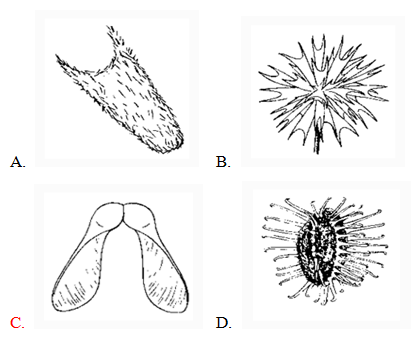
Many ideas concerning cells have been proven and incorporated into the cell theory.
Câu 10. Which of the following is not part of the cell theory?
A. All living things are composed of one or more cells.
B. All cells come from other cells.
C. All functions may be carried out by cells.
D. All cells reproduce through meiosis.

